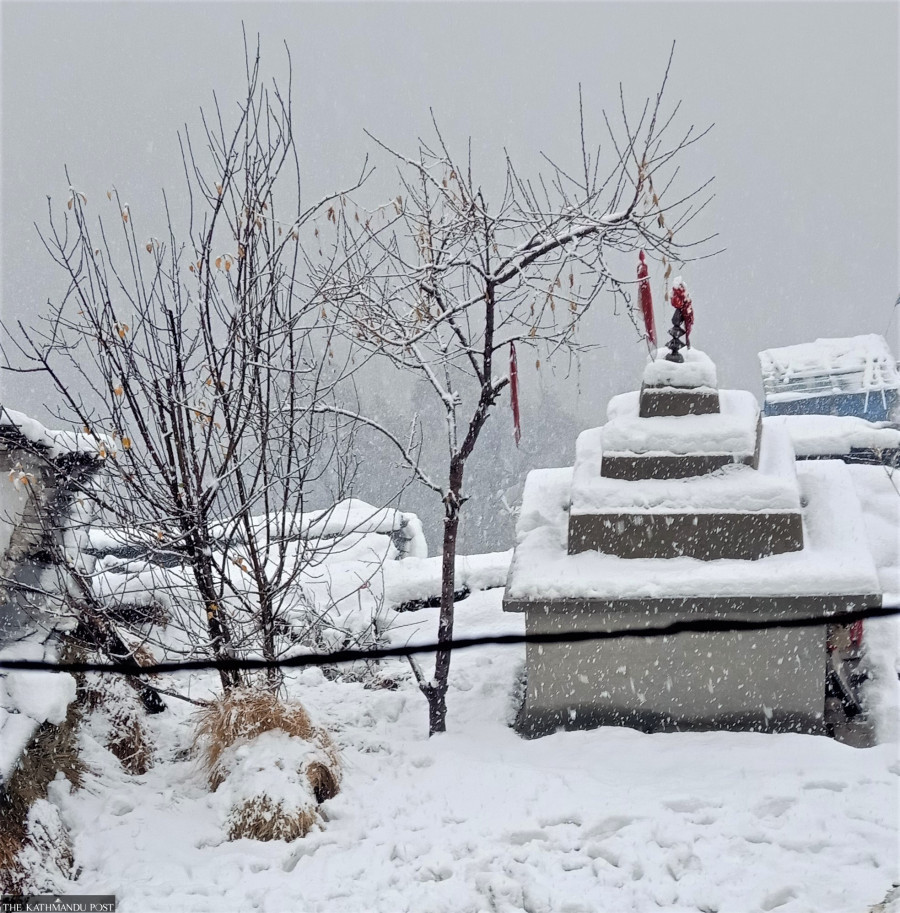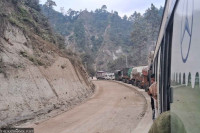Editorial
More ways to tackle a problem
Remote regions have suffered from years of negligence, and nothing has been done to ensure a lasting solution.
This year’s unrelenting snowfall has exacerbated the issue of supplies of essentials to the remote hilly regions of Nepal. A report by the Post shone light on the problems faced by the residents of Nyuna village of Saipal Rural Municipality in Bajhang. The villagers have voiced their plight concerning the disruption of essentials due to heavy snow, and more importantly, the complete apathy shown by the administration. The disruption of supplies is as seasonal as the weather itself. If it is not snow, then it is probably rain. Still, such issues are more the result of the indifference shown by the authorities and unscrupulous intermediaries in manipulating supplies.
If the issue is perennial, there needs to be policies to tackle the problem. In Nepal, what we have witnessed in the last two years of the pandemic is the haphazard nature of decisions without much foresight and planning. And this nonchalant attitude of leaving things to their own devices seems to be the hallmark of the Nepali administration at all levels of governance. The administration’s response has been chiefly reactionary, always a few steps behind in dealing with a problem.
It is well understood that rugged terrain is the crux of the problem. The authorities could overcome the problem of supplies by ensuring that each village, and not just the district headquarters of the province, has a storage facility for essential food supplies, especially in remote regions, rather than just relying on the individual effort of the populace. And before the onset of a particular disruptive season (monsoon or winter), storage facilities should be stacked with supplies based on predictable demand for the season. This would ensure that the people have continuous access to essentials in case of disruption, which sometimes lasts for weeks.
Development is often a case of providing the basic needs of the people, and the government’s inability to overcome demographic imbalances is projected by the recent census. Youth migration has left the hills barren, and these sparsely populated regions have failed to attract the administration’s attention. It seems that the concerns of those that remain in those areas are not considered grave enough for the authorities to lose sleep over. And tracts of arable land that once provided some relief to the families now lie barren, devoid of labour or any subsidies that would encourage locals to ensure some measure of comfort.
It is easy to see the disruption of supplies from a single lens and blame the weather squarely for cutting off access. There is more to this than meets the eye. These remote regions of Nepal have suffered from years of negligence, and nothing has been done to ensure a lasting solution. These regions have had to make their own arrangements to avert a severe crisis. Better connectivity would undoubtedly help alleviate a lot of the people’s problems, but perhaps the administration could begin brainstorming to unravel more imaginative ways of solving problems.




 15.24°C Kathmandu
15.24°C Kathmandu














